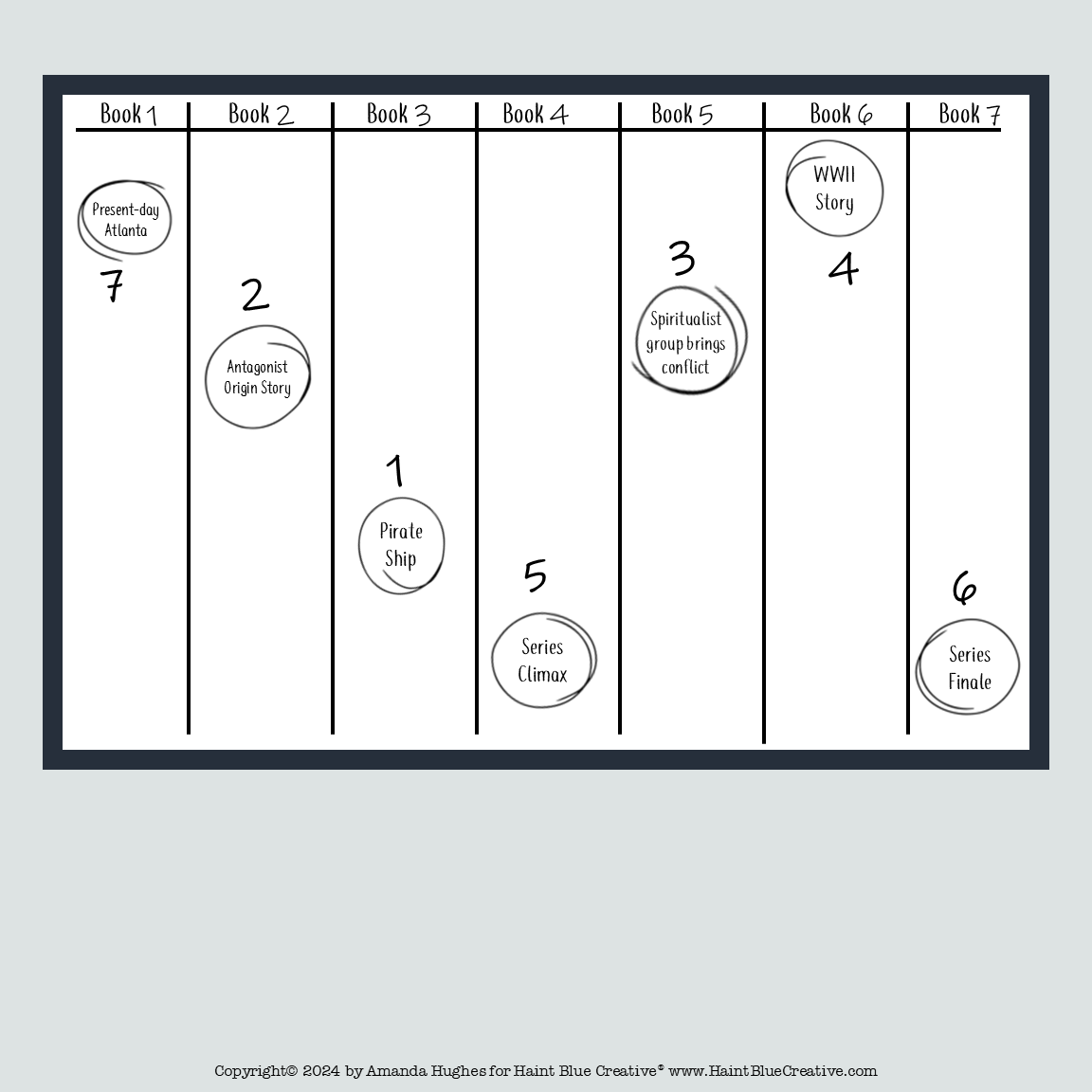Write All Over the Place
A Nonlinear Method for Writing a Linear Storyline
One day not long ago, fellow Substack writer
met with me to ask questions about creating her first work of fiction. Although Nancy has written and published dozens of nonfiction—Ancestral Tarot, Ancestral Grimoire, and the Ancestral Magick Oracle are my favorites), she’s venturing into fiction for the very first time.Immediately, I referred to my Novel Writing Checklist, asking Nancy whether she had her idea baked out (yes), if she knew her genre (yes, a cozy mystery), and so forth. While Nancy had a semi-organized plot line, and she was clear on who her characters are and how they’ll move through the story, her greatest concern was not knowing where to start writing. “I have an idea of how the book begins and ends,” she explained (and I paraphrase), “but I’m not sure where some of the scenes fit along the way.”
In fiction writing, it’s common to not have a clear vision of the middle parts of a story. Even with exercises and spreads like my Raiders of the Lost Story Arc or The Writer’s Cross (both available in my new book Mystic Storyteller: A Writer’s Guide to Using the Tarot for Creative Inspiration) to help with organizing story ideas, having a snaggle-toothed outline can stifle progress, making it feel even more difficult to believe you’ll ever finish writing an entire book.
When I find myself stumbling through the outlining process, I write scene-by-scene. In today’s Substack article, Part 8 of my #NaNoWriMo* Support Series, I’m going to show you an alternative to writing your story on a linear path; I’ll share how I piecemeal a book together as the scenes inspire me.
My latest fiction project
is a seven-book series. So far, I’m clear on my goals, I’ve established a writing schedule, the ideas have been brainstormed, I know the genres (historical fiction [maybe even fantasy], magical realism, Southern Gothic, romance), the characters have been fleshed out, and I’ve mapped the world in which they live.
Presently, I’m in the outlining phase, having mapped out the series at a sky-high level on several spreadsheets and a wall-sized whiteboard. I know that each book will contain two to three storylines, all occurring in the past, along with a present-day story arc that stretches across the length of the series.
To this point, my outlining process has included plugging themes and ideas into each book’s section on my whiteboard; however, when I step back and look at the entire project as a whole, it looks like a mess, and I get overwhelmed!
The problem
is that I’m looking at the story on its linear path, left to right, beginning to end, and I’m stumbling over the notion that I have to write these books, this series, from beginning to end. It seems impossible, what with all the plot holes that still need filling and great chunks of the series I haven’t yet imagined claiming blank spaces on my whiteboard.
Additionally, I’m being haunted by questions like, What if I change something in Book 5 and have to go back and rewrite Books 1 through 4?! While this is a nightmare of a thought, it’s validated.
If you’ve ever felt similar anxiety around the prospect of having to write your book from beginning to end, I have good news for you: you don’t.
A Solution: Be a Cobbler
Cobble your story together. Writing your book in chunks might seem more digestible than trying to write the entire book at once. Now, don’t go throwing away your outline; keep it. You’ll need it as you go. But, for now, start with the scenes that are lingering in your mind. Write them first, and then plug them into the outline where they fit.
Here’s an example:
In the illustration below, you can see random scenes throughout my fiction series. The numbers above or below each scene denote the order in which I plan on writing them.
What do you think?
Does patching your book together scene-by-scene feel more palatable than the idea of having to write it along a linear route? If you’ve already written a book(s), what’s worked for you? What methods have you tested in order to move your project from outline to paper?
About Mandy
Amanda “Mandy” Hughes is an author and instructional designer who uses the tarot to inspire storytelling. Her book Mystic Storyteller: A Writer’s Guide to Using the Tarot for Creative Inspiration and companion tarot deck are coming soon! She also writes fiction under pen names A. Lee Hughes and Mandy Lee. Mandy lives in Georgia with her husband and four sons, two of whom are furrier than the others (but not by much). Visit her website at www.haintbluecreative.com and follow her on Instagram @HaintBlueCreative.






